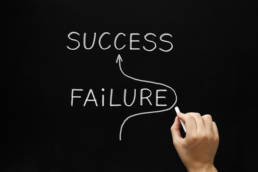The role of Solutions Architect is one of the most versatile, challenging, and rewarding positions I’ve personally had. I’ve worked alongside hundreds of such folks across roles and companies and think the following five traits are at the heart of all those that I would consider highly effective.
Strong business acumen
An effective SA needs to have a deeper understanding of business in general, but especially the business their customers happen to be in. This bleeds into all areas of the role. If your customer is a retailer, talking about making changes before critical times of the year (pretty much all of Q4) is a non-starter.
Knowing how your customer conducts business is equally as important, right down to their organizational structure. This takes time to learn and earn trust to get at these details. However, once you hit this level of understanding you are in a much better position to help your customer solve business problems with technology. It’s much easier to engage in solving business problems where the value is immediate, as opposed to trying to solve technical problems that may not have as meaningful of an impact on the business.
Technical prowess
To be effective as a solutions architect you need to know your product in and out. You have to be the expert on it, or at the very least, know who is the expert so you can learn from them. Effective SAs don’t try to “fake it until you make it.”
The key pattern is knowing what you don’t know and working to make sure you address the gaps. This certainly doesn’t mean you always have the answer. It can be just as effective to tell a customer “that’s a great question, I’ll track down the answer” rather than just shooting from the hip. It seems weird to say, but I have seem many well-intentioned SAs make up reality in the moment. With Google you can fact-check pretty quickly and your customers certainly will. Then you loose trust.
In almost a complete paradox, SAs often need to share technical information to non-technical stakeholders. The way you describe a concept to a fellow architect is quite different from how you describe it to a c-level executive. Reading the room and sharing the right information, in the right way, is a skill onto itself.
Drive towards requirements
The notion that “the customer is always right” has been engrained in many of us. However, once you enter the technical solution role of SA, you pretty quickly learn this comes with some serious caveats. If you happen to be a true expert (or in many cases, just having used the technology before) the odds are pretty good you know more than your customer. The key is not letting your customer know you know more than they do. Arrogance is certainly not going to help you convince your customer to do the right thing and trust you. It’s key to establish and earn trust with your customer.
Once you have earned the role of trusted advisor with your customer, you are in a position to really help them solve their business and technical problems. The biggest thing you will routinely find is lack of requirements. I’ve lost count of the number of engagements where I’ve heard “uptime is important” or “this is mission critical” and then there’s not any actual business requirements for application availability to even being to drive at a technical solution to meet them. What’s worse in many ways is general requirements. The absolute worst I’ve seen was “we have a 100% uptime SLA, no component can go down ever.” Come to find out the customer had one data center and a pretty much non-functional disaster recovery plan. They couldn’t meet their own “requirements” on-premises, yet were expecting to be able to forklift the workload into the cloud. The architects on the project failed early on and were not driving the customer toward requirements that were achievable.
Customer focused
A deep focus on customers is key to earn trust and be effective. I hesitate to say customer obsession, as its too strong of a word and can feel unnatural.
You engage differently with customers when you are a trusted advisor and not a salesperson. This means no “FUD” as it’s called (fear, uncertainty, and doubt). Nothing will turn off a customer more quickly than old-school tactics meant to intimidate. This is especially true of customers that happen to be more knowledgeable than you are. It comes off as disingenuous and will loose any trust you may have otherwise gained. It’s worth mentioning as I’ve seen OK SAs resort to these tactics, but never great ones. Your customer shouldn’t feel like they need a shower when they are done talking to you.
Relationship building
Relationship building is key to any role, but especially SAs. This is equally true internally and externally to a company. Your customers need to know they can pick up the phone and call you (and when it’s appropriate to do so). You need the ability to pick up the phone and call your customers. You also need a solid support network of folks you can lean on, but that also lean on you.
It’s easy to miss the relationship building part of the job, especially for deeply technical folks. Throw in introverted tendencies and you are talking quite a lot to overcome. That doesn’t mean it’s impossible. The key is to find a solid mentor that can help work through this if it does not come naturally. Quite honestly it did not for me, but it is something that can be worked on.
Conclusion
Hopefully this was a helpful summary of five traits I’ve personally found make for an effective SA. There are certainly more, but business acumen, technical prowess, driving toward requirements, customer focus, and relationship building are five traits that separate out the good from the great. I think Andy Jassy said it best, “there’s no compression algorithm for experience,” which is as equally simple as it is profound. Some SAs have an entire career under their belt, yet still don’t demonstrate all of these traits (some don’t have any). Please feel free to comment and share any thoughts!
Related
Related Posts
August 10, 2021
Goodbye (and Good Riddance) EC2-Classic
AWS has recently announced the retirement of EC2-Classic, albeit a year from…

